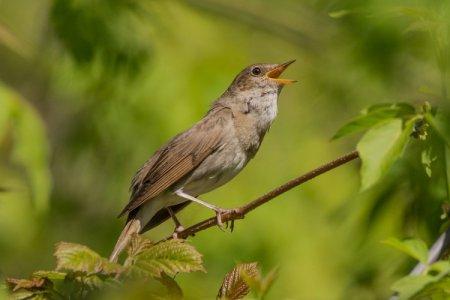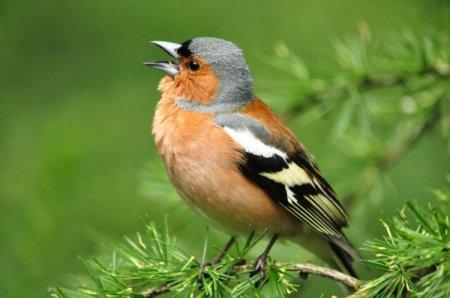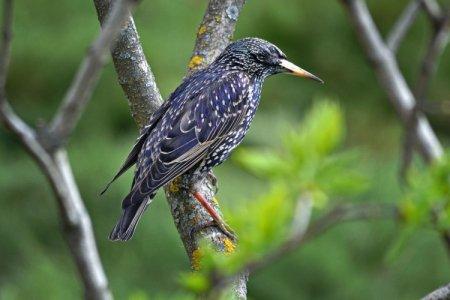
Another bird surrounded by many legends and stories is the stork. Since ancient times, he was considered a symbol of prosperity and procreation, as well as the patron saint of the family. All this, of course, is good, but today we would like to tell you more about a real live stork and its features!
general description
The stork belongs to aquatic, or rather, to wading birds. In different classifications, storks are also called ankle, and this fully reflects the characteristics of their species. The legs of storks are always long, bare and covered with mesh skin.
Stork appearance
The color of the plumage depends entirely on the specific species, but most often these are white and black storks. The legs are reddish, as is the long, straight, conical beak. Fingers with the same pinkish claws are connected by membranes, which gives the bird stability.
There may be areas of bare, rough skin on the stork's head and neck. Males and females practically do not differ from each other, but males can be larger.

Communication
Storks have a very interesting form of communication. They do not have the trills and melodies we are used to, but they throw their heads back and snap their beaks. Due to the structure of the body and larynx, the sound resonates and is greatly amplified.

How long do storks live?
The average life span of a stork is about 20 years. In captivity, they can live another 10 years longer. But in the end, it all depends on the specific species and its habitat.

Myths and beliefs
In rural areas, there is still a belief that a stork's nest on the roof of a house brings prosperity. Often people themselves install cart wheels or similar supports on the roof so that it is more convenient for birds to nest. In addition, it was believed that if the storks left the nest, the owner of the house would face a crop failure, childlessness and other troubles.

Stork species
In Europe, only white and black storks nest, but other species occasionally fly in. Let's take a closer look at a few more of them!
White stork
The same familiar stork that you most often see in the photo, or even on the roofs of houses. It is the most famous and most abundant species with white plumage, black wingtips and red legs.

Black stork
This species prefers to avoid human proximity and lives in forests. Therefore, the features of his lifestyle are still poorly understood. But it is known that he calmly flies over the seas, while white storks avoid such routes.

African beak
Looks more like an ibis than a white stork we are used to. It lives in Africa, but sometimes it turns out to be a flight over the territory of Europe. Body length - no more than 1 m, on the head there is a red mask without plumage, from which a large and slightly curved beak goes down.

African marabou
Another type of stork, which is at least heard. It is the largest member of its family with a wingspan of almost 3 m.There are some known specimens with a wingspan of up to 3.2 m.

White-bellied stork
This species attracts attention with its unusual brown color, casting burgundy. During the mating season, the base of the bird's beak turns blue. This is one of the smallest storks up to 75 cm in length.

White-necked stork
The white and seemingly fluffy neck stands out in a very contrasting way against the background of the black head and back. The main part of the plumage casts red and green. The white-necked stork is found in India and Africa.

American stork
A South American bird that is easily recognizable by the red mask around the eyes and the red end of the light beak. Otherwise, it resembles an ordinary white stork.

Lifestyle
Storks always settle in humid places closer to water bodies. They live in pairs or families, fly well and are not afraid of long journeys. The structure of the body allows them to masterfully use the movement of air masses to save energy in flight.
Stork habitats
The habitat of the stork completely depends on which specific species we are talking about. In Europe you will meet white and black storks. Moreover, they have completely different preferences. Some species have nothing against being close to humans, but in this case they choose hard-to-reach high places.

The diet
Storks hunt on land, slowly pacing the terrain and briskly grabbing their prey. They eat frogs, toads, fish, small rodents, lizards and practically everything that passes by. Some species, like marabou, are even capable of feeding on carrion.

Wintering
In Europe and Russia, storks fly away to winter in the warmth. Young individuals fly away earlier, following instinct. And adult birds go on a journey only in September. In flight, storks cover huge distances, up to 200 km per day. In Russia, they return quite early, towards the end of March.

Breeding storks
Storks arrange their huge nests on rooftops, treetops, poles and other suitable supports. They return to the same nest for years, so the larger it is, the older it is. Moreover, over time, chicks occupy the parental nest. For example, a tower nest in Germany has been in use for nearly 400 years.
First, the males arrive at the place, and then the females. If it happened that several females flew to one male at once, they enter into a fight, and the winner gets the nest. Males jealously guard their territory and even attack their fellows.
The female lays 2-5 white eggs on average, and both parents incubate them. Usually, the male stays in the nest during the day, and the female at night is a special ritual. After a month, the chicks hatch, and after another 55 days they gradually become on the wing. Storks are considered independent when they reach 70 days after hatching. And they themselves begin to nest only after 3-6 years.
At first, the parents feed the chicks with small and slippery prey, such as tadpoles or earthworms. They bring them water in their beak, and pour it like into a vessel. After 3 weeks, the diet of the chicks becomes almost adult.

Natural enemies
Due to the large size and high location of the nests, storks have few enemies. Most often, their numbers are declining due to climatic changes, landscape changes and human activities. Power lines are a dangerous enemy in modern cities. In addition, it has been precisely proven that sometimes storks themselves cleanse their population of weak individuals.

Storks - photo
It is quite difficult to see the stork up close. Although they often settle near our homes, they still prefer to lead a secretive lifestyle. So we suggest admiring them at least in photographs!




























